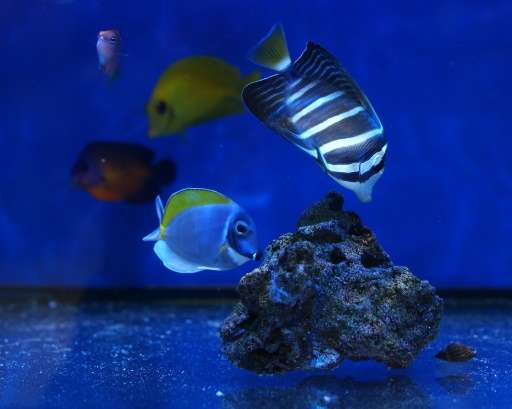Killing Nemo: Cyanide threat to tropical fish

Many of the real-life Nemos swimming in children's fish tanks are caught using cyanide, said research Thursday which highlighted the danger to corals.
Friday's release of Pixar's "Finding Dory", an animated film about a forgetful blue tang, will likely boost demand for aquarium specimens of the tropical fish, and fuel the poisonous practice used to trap them, said a report.
The film's predecessor, "Finding Nemo", had seen more than a million clownfish taken from tropical reefs, said Craig Downs of the Haereticus Environmental Laboratory in Virginia, a research body which worked on the report with conservation group For the Fishes.
One of the most common, though illegal, ways of capturing the colourful creatures is to use cyanide.
"For them to be caught... you squirt cyanide onto a fish or it goes into this cloud of cyanide and it is stunned," Downs told AFP by telephone.
More than half of saltwater aquarium fish the researchers bought from US-based pet stores and wholesalers, tested positive for cyanide residue, said the report.
The results would be similar in other countries, given that most of the world's tropical aquarium fish come from the same suppliers, said Downs. Tests on European pet fish will follow next year.
The team had tested over 100 fish, including blue tangs—of which an estimated 300,000 are traded every year, according to a recent report.

"The 'Dories', the blue tangs, the ones I purchased, all had, except for one, very high levels" of poisonous residue, said Downs.
And those "did not survive beyond nine days after purchase."
Something fishy
Blue tangs are sold for aquariums for up to 150 euros ($170) apiece, said Downs.
But worse than customer deception, the practice of cyanide fishing is devastating for the coral reefs that the popular pets come from.
"Cyanide fishing is very destructive to coral reefs and coral reefs are under a huge amount of climate change stress at the moment. All through the Indo-Pacific, corals are bleaching," said Downs.
"A bleached coral has a high possibility of recovering if there's no other pollution stress around it. But if you throw a cloud of cyanide over a reef to stun all the fish and that coral is bleaching, that reef is dead. It will kill all the coral."
The fish species themselves were not under threat of extinction, he added, though "probably, in 50 years, there's going to be so few reefs... that most of the fish will probably be put on the endangered species list."
The data will be presented to the International Coral Reef Symposium in Hawaii next week, and submitted to a scientific journal for publication later in the year.
© 2016 AFP




















